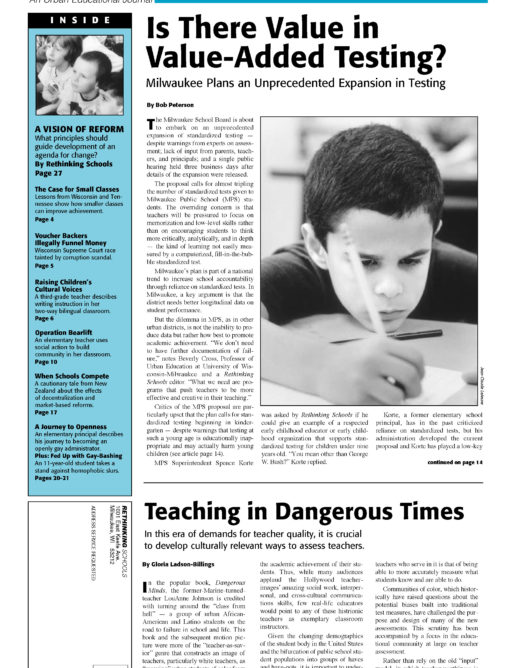Preview of Article:
The Tea Party
A high school English teacher uses a "tea party" - in which students give brief previews of good books - to entice reluctant readers to read.
On the day we begin a new book, I bring cookies and juice to sweeten the learning. I type out five roles for main characters in the book. I color code cards for easy identification. For example, in James Welch’s Fools Crow all of the cards are blue for the character Fast Horse, cards are yellow for the character Yellow Kidney, and so on. I try to find enticing passages from the novel to use in these roles, or I write a piece from the character’s point of view. I want to create intrigue and questions as well as familiarize students with the characters before they begin reading. I write the role in first person, so students can more easily get into the character’s head. In Zora Neale Hurston’s novel
Their Eyes Were Watching God, Nanny’s card reads:
Grandma/Nanny: I didn’t want Janie taking off and getting pregnant like her mother before her. I wanted more for her. That’s why I told her she should marry Mr. Logan Killicks so she could have something for herself. I’m the one who told Janie that I didn’t want menfolks, white or black, making a spit cup outta her. A black woman can’t have much in this world, but before I die I’m gonna make sure Janie’s got something.
I give each student one of the five character cards. On a separate paper, they write down the character’s name and key pieces of information that other people in the class should know: Who they are related to, what their problem is, what has happened in the past that they are worried about. In some classes, I ask them to write out the entire passage about their person. After students write key points or the passage, I instruct them to write some questions or thoughts they have about their person. They don’t have much information, so they often have a lot of questions. For example, “What happened to Nanny to make her so bitter?” or “Does Janie love Logan Killicks?” Sometimes I propose a topic I want them to write about as if they are the character. For Their Eyes Were Watching God, I ask students to jot down what their character – Nanny, Janie, Tea Cake, Joe, or Logan – might write about love – from their character’s point of view.
THE TEA PARTY
Then students in their character roles, get up, walk around, and introduce themselves to the other characters. In Hurston’s novel, I include roles for Nanny, Tea Cake, Janie, Joe, and Logan. Students must find the four other characters and write down key information about them before returning to their seats. After they’ve recorded the information on each of the characters, I ask them to formulate questions they want to find out more about as they read the novel. Because some of my more devious students find ways to cut their work short, I tell them that they have to talk to the other characters, not copy their cards.</p

